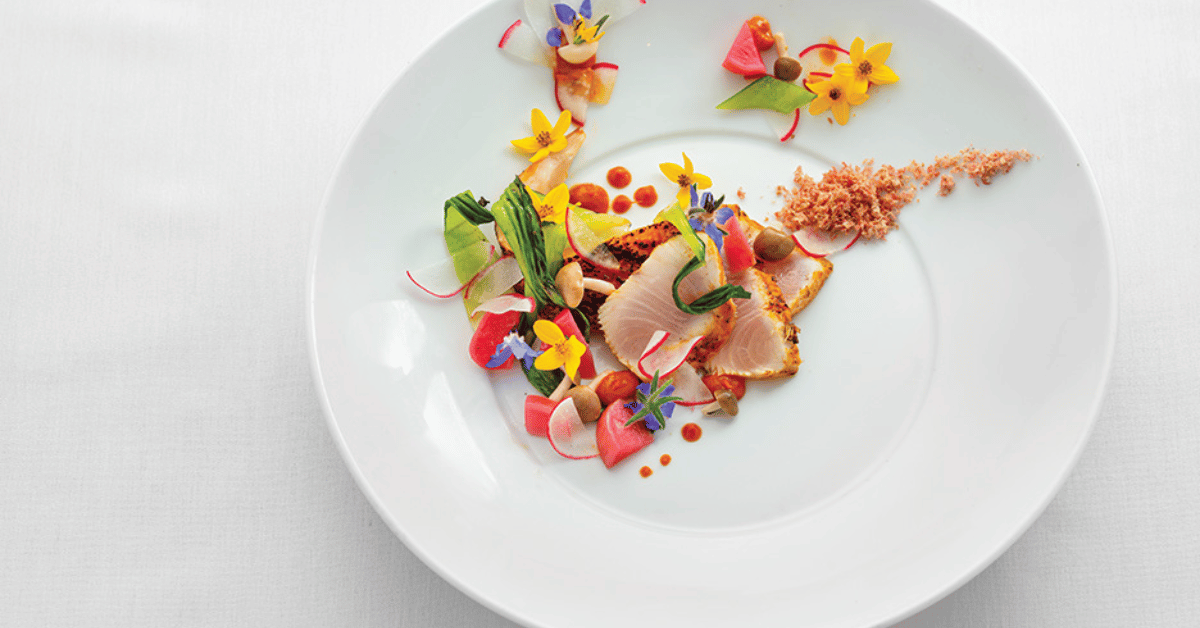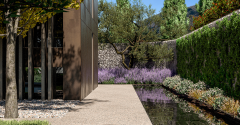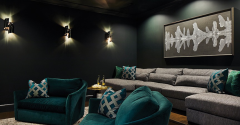Finding the Ultimate Homes
By Camilla McLaughlin
The top luxe locations in the U.S. have evolved quite a bit in Unique Homes’ 45-year history.
Location might be a fundamental that drives value, but in the world of luxury real estate the status of any one place often depends on the moment.
“It’s not location, location, location; it’s timing, timing, timing,” says Jeff Hyland of Hilton & Hyland in Beverly Hills.
When Unique Homes was founded in the early 1970s, the decades-long migration to suburbia was still underway, with affluent homeowners gravitating to traditional upscale enclaves such as Greenwich, Connecticut or Saddle River, New Jersey. West Coast luxury stars included Beverly Hills, Holmby Hills, and Bel Air. Fledging resorts like Vail were just gaining recognition and Cabo remained an exclusive domain of Hollywood glitterati.
Today, urban centers account for some of luxury’s most coveted addresses. A new generation of even more indulgent retreats and a growing number of ultra-private communities are rising to replace traditional grande dame resorts that have lost exclusivity. And many more cities have thriving high-end markets, while properties in well-established upscale enclaves are creating new paradigms for size, finish, and amenities.
Geography of luxury
Over the years, the preferred places for the wealthy change and evolve. Some fall out of favor, and then a decade later might be rediscovered. New in-demand locales emerge, while blue-chip mainstays seem to be insulated from the vagaries of the market. “As the market gets better and better, areas on the fringe will be included,” says Hyland of L.A.’s Westside neighborhoods.
One of the biggest catalysts over the years has been new industries and sources of wealth. Apple Computer was founded at the same time as Unique Homes, but the tech revolution that would incubate a new crop of millionaires was in the future. “San Jose was a bit of a sleeper,” recalls Paul Boomsma, president, Luxury Portfolio International and COO, LeadingRE.
“With regard to San Francisco, traditionally there were certainly wineries and some nice estate properties up in the wine country, specifically Pacific Heights — that’s really where the wealth was. Now that’s kind of dwarfed by some of these really large homes in Silicon Valley, which didn’t really exist,” Boomsma explains. In the Bay area, sales of homes priced above $10 million were up 57 percent last year, even though limited inventory put a damper on overall transactions, according to Coldwell Banker Real Estate research.
In 1995, around our 25th anniversary, the number of ultra-high-net-worth individuals worldwide was just 84,974. Flash ahead 20 years and the ultra-high-net-worth population (those who have more than $30 million in net assets) hovers at 211,275, a 150-percent increase. More than almost any other factor, this wealth explosion is changing the geography of luxury in the U.S. and worldwide. “Suddenly a $10 million condo isn’t noteworthy,” says Boomsma. Recalling Manhattan of 20 years ago, he says, “The most desirable residential properties were co-ops. The number of really extreme properties in Manhattan was not that great. I am not sure a $10 million co-op existed.”
Still, coops continue to be “very unique, highly sought after,” says Philip White, president and CEO of Sotheby’s International Realty, who compares them to a private club, since a purchase requires board approval.
Dallas, Houston, Atlanta, Seattle, and Denver are all cities rapidly acquiring high-end neighborhoods. “Those cities were not considered luxury destinations, but look at the market share and the increases in million-dollar homes — in some cases 20 percent — and I think that makes them a new player,” says Craig Hogan, vice president of luxury for Coldwell Banker Real Estate. According to Coldwell Banker Previews’ Spring 2016 Luxury Market Report, Austin, Dallas, and Seattle were among the top 20 markets for $1 million-plus sales. Denver was cited as an up-and-coming million-dollar location, while sales above $5 million are on the rise in Dallas.
For this article, we happened to catch up with Hogan in Bellevue, Washington. “It’s an eye-opening experience,” he says. “The market is off the hook. It’s a hot market with average days on market around 45 days, and people are paying over asking price.”
The explosion of wealth is also upping the ante for what it takes for a home to be deemed upscale, and this is especially true in some traditional locations known for luxury. Historic estates in the Hamptons have been on and off our list of the most expensive, beginning with Three Ponds Farm Estate, our very first Ultimate Home, listed at $75 million, in 2005. Another landmark, Eothen—the Church Estate, at $45 million — was No. 10 in that same issue. The Hamptons might be perennially platinum but “homes there have also become extreme,” says Boomsma, pointing to the boost in incomes from the stock market as well as venture capital and hedge fund money that has pushed the parameters for luxury here (and in other places as well).
In 2015, Beverly Hills saw 37 sales over $20 million, and a majority were to residents of the U.S. “When I moved here from Houston, I wasn’t prepared for the level of housing here,” says Ann Dashiell with Douglas Elliman Real Estate in Beverly Hills, who was one of Houston’s top real estate brokers. Currently, she is listing one of the most expensive homes in the U.S.
Nothing has made inaccessible or inconvenient locations more appealing than private aviation. In the last 15 years, fractional jet ownership has carved out a new landscape for resort properties. “Today the private jet has completely changed where people are able to build homes. Hawaii has a much larger contingent of really ultra-wealthy properties, and they’re resort homes. They are for people who are not primary residents. That would not have been available without private jets,” shares Boomsma. In the Ultimate list for 2016, Hawaii has more entries than Connecticut.
Among properties listed in Ultimate Homes, both California and New York outpace other states in terms of the number of homes priced above $20 million. Both areas, along with Florida, also have been beneficiaries of the growing recognition of the U.S. as a safe haven by international buyers. Mention New York or Beverly Hills almost anywhere, and instantly there is a recognition of value and worth. “You can be walking down the street in China, and if you say you are in Beverly Hills, everyone knows it,” says Dashiell. International interest and the growing perception of the U.S. as a safe haven are driving upscale demand in both primary and second home locations, and that is shaping the luxury landscape.
Prime properties reach new heights
The popularity of urban living might seem like a recent craze, but it began decades ago in New York as downsizing boomers happily exchanged large suburban homes for resort-like services and city living. The 1990 census showed the first net migration back to the city in 60 years. “That was the start of the reurbanization of American cities. New York led the way,” says David Michonski, who recalls, “We were in the midst of a mega trend.”
Similar moves were underway in Boston, and soon the trend extended to Philadelphia, Chicago, and other major cities. Even today’s resurgence in Atlanta is an outgrowth. “The trend has continued and now it’s on steroids,” says Michonski.
Although high rises always have been part of the urban experience, the buildings being created today deliver an entirely new vision of city living. Stunning architecture, views, and the latest electronics are only part of the lifestyle, which often includes a huge range of amenities from ice skating rinks to multiple pools, art installations, and — in the case of one building in Midtown Manhattan — a club for dogs. Even a garage outside the door of your home on the 58th floor is possible. It’s all part of the new urban lifestyle, something those early urban “pioneers” in the 1970s could not have envisioned.
The Big Apple, more polished than ever
New York continues to be the epicenter of luxury real estate in the U.S., with over 50 percent more $20 million-plus listings than California in 2016. It is notable that the average price of a Manhattan apartment topped $2 million in the first quarter of 2016, a year-over-year increase of 18 percent. The median price increased by roughly 17 percent, and came in at just over $1.1 million. Although the pinnacle of real estate in the Big Apple has been receiving mixed reviews, reports of mega sales continue. Manhattan and New York City make up the bulk of the New York entries on our Ultimate list. Prices in the Hamptons continue to rise, with about 70 priced over $20 million. Hot in the Hamptons are East Hampton, Southhampton, Quogue, Watermill, and Wainscott. Rye, in Westchester County, is one of the few primary home locations on our list.
California
California consistently vies with New York for having the greatest number of homes priced above $20 million. More places have also become ultra-high-end enclaves. Places with the highest number of listings include Beverly Hills and Bel Air. In recent years, buyers in California have shifted priorities. “In general the luxury buyer wants attractive architecture,” explains Joyce Rey, executive director, Coldwell Banker Previews International in Beverly Hills. “The style has changed, with growing preference for contemporary, but they still want privacy and the prime location change is the gravitation toward views and an emphasis on contemporary architecture.” Holmby Hills is perennially platinum on Ultimate lists. Malibu had the highest sale in the area in 2015 and continues to be an evergreen luxury location as do Montecito, Santa Barbara, La Jolla, and Los Altos.
Florida
The Sunshine State was hard hit by the recession. Many suggested it would take decades for the housing industry there to recover. Although some locations are still not back to pre-recession prices, the problem in many cities and resort locations is lack of inventory. Luxury in Miami has been moving at a hyper-fast place. On the west coast, places such as Naples that have always been upscale but not uber luxury are now considered luxury enclaves. “Ten years ago, Naples wasn’t nearly what it is today. For many, it is their favorite place in Florida,” says White. In fact, the number of $20 million properties in Naples is very close to the number in Palm Beach. Delray and Fort Lauderdale are seeing a resurgence of upscale properties. Additionally, a number of other places are experiencing the resurgence of luxury including Hobe Sound, Longboat Key, Vero Beach, and Wellington.
Resorting to resorts
Second home sales reached their highest level in recent years. Upscale consumers often have more than one vacation home. Locations range all over the country, depending on passions and interests.
Colorado in recent years has had more entries in our Ultimate publication, particularly this year when Colorado properties outnumber those in Connecticut. While this might be a function of inventories, it is also an indication of the growth of luxury. Aspen had one of the highest priced properties in 2015, and it remains a luxury star, as do Vail, Beaver Creek, Crested Butte, and Telluride. Ranch properties add a range of places, including Hesperus and Woody Creek. Park City, Utah is on the verge of offering competition to Colorado luxury.
Hawaii has become another luxury stronghold, and new resorts in Maui and other islands are raising the bar for translating the Aloha spirit. The new language of luxury includes places such as Kilauea, Kailua, Kalaheo, Princeville, and Lahina. And of course Honolulu.
But these few states, along with Florida, are really only the beginning of luxury resort locations, including Flathead Lake and Whitefish, Montana. And Southern stars, including Kiawah Island and Beaufort, South Carolina.



































